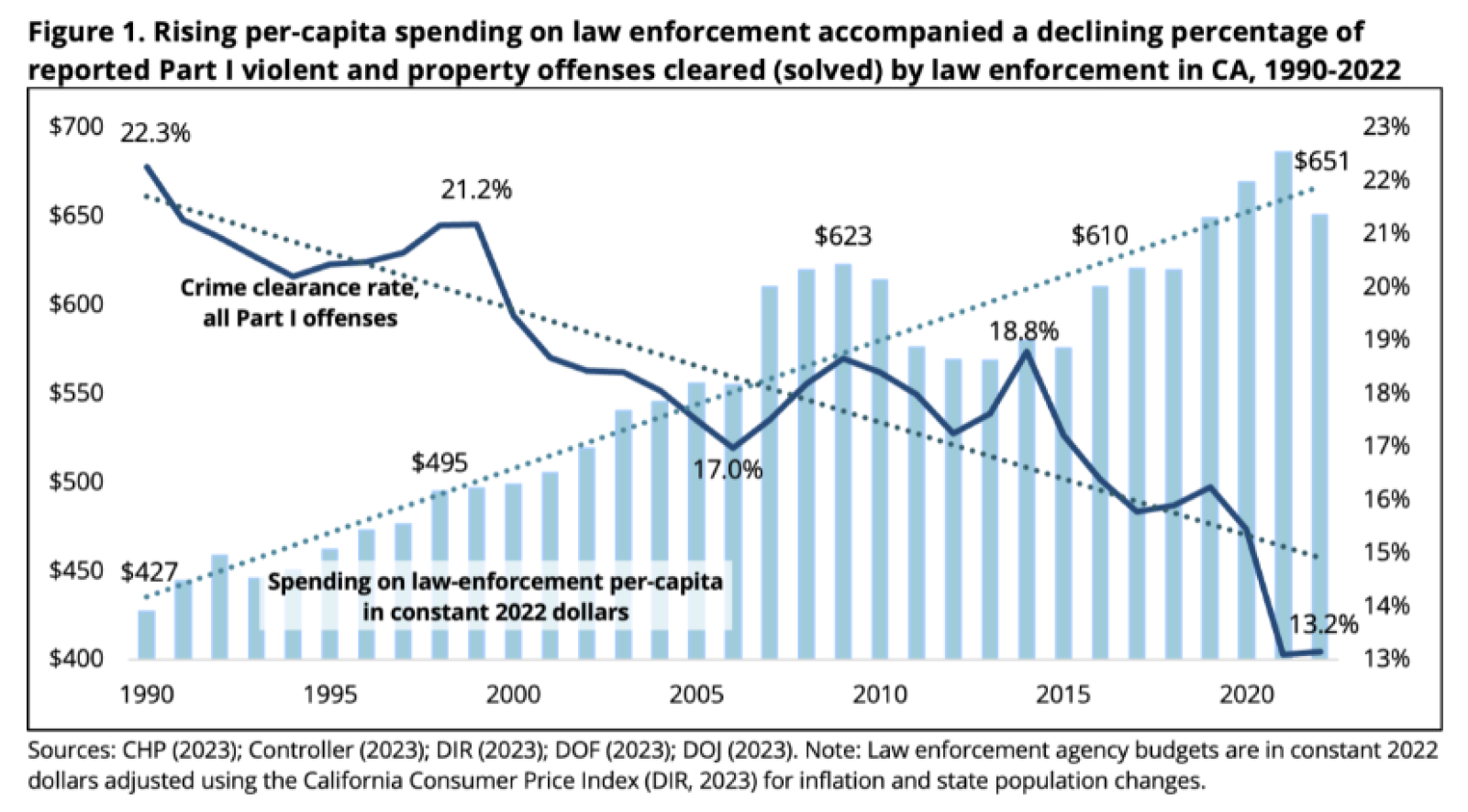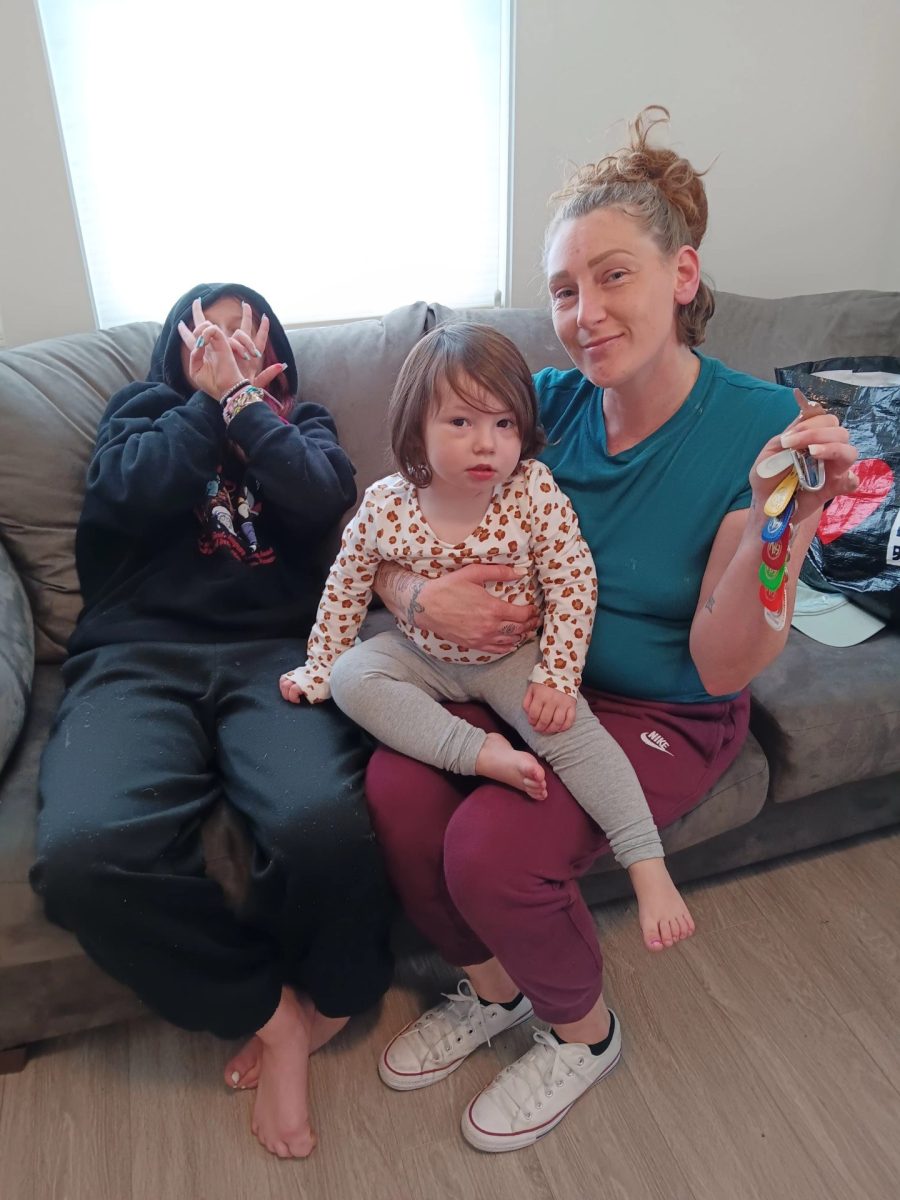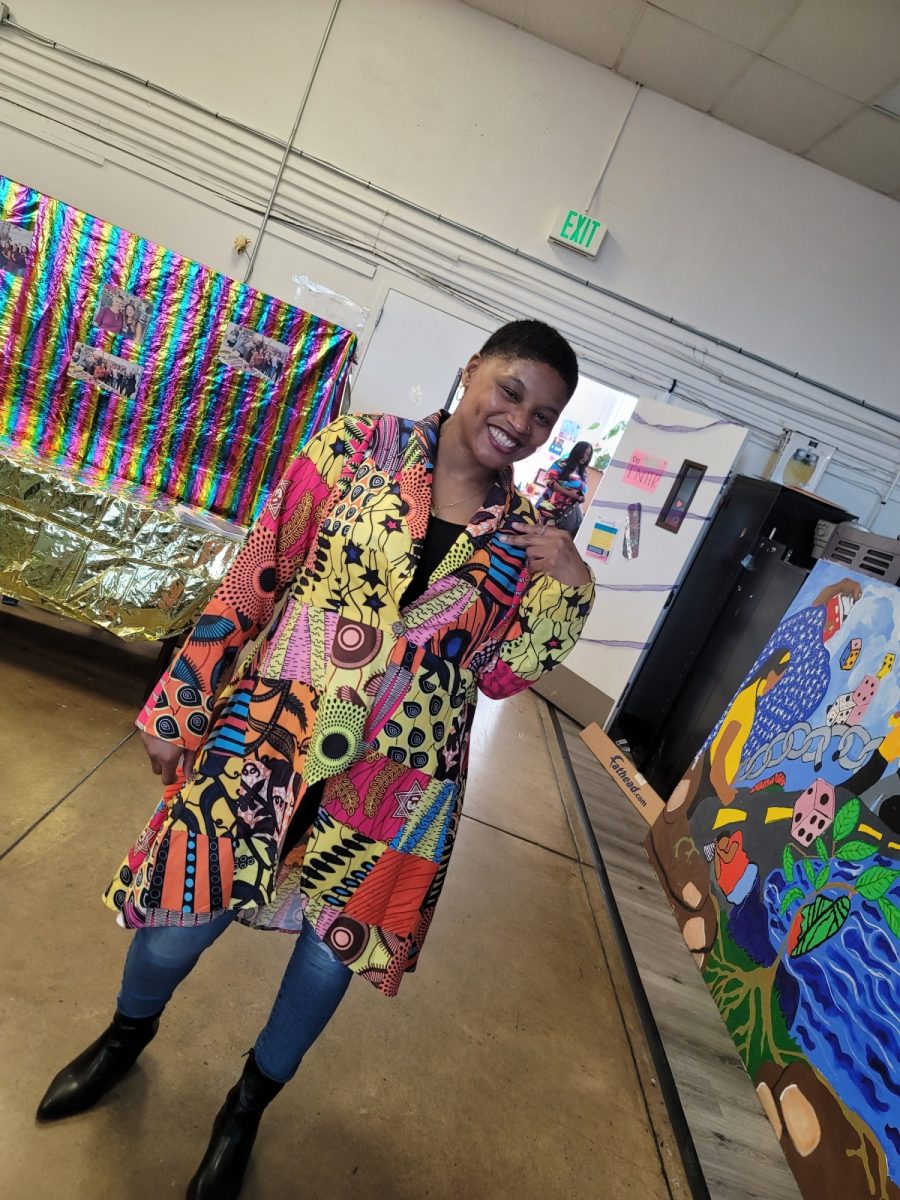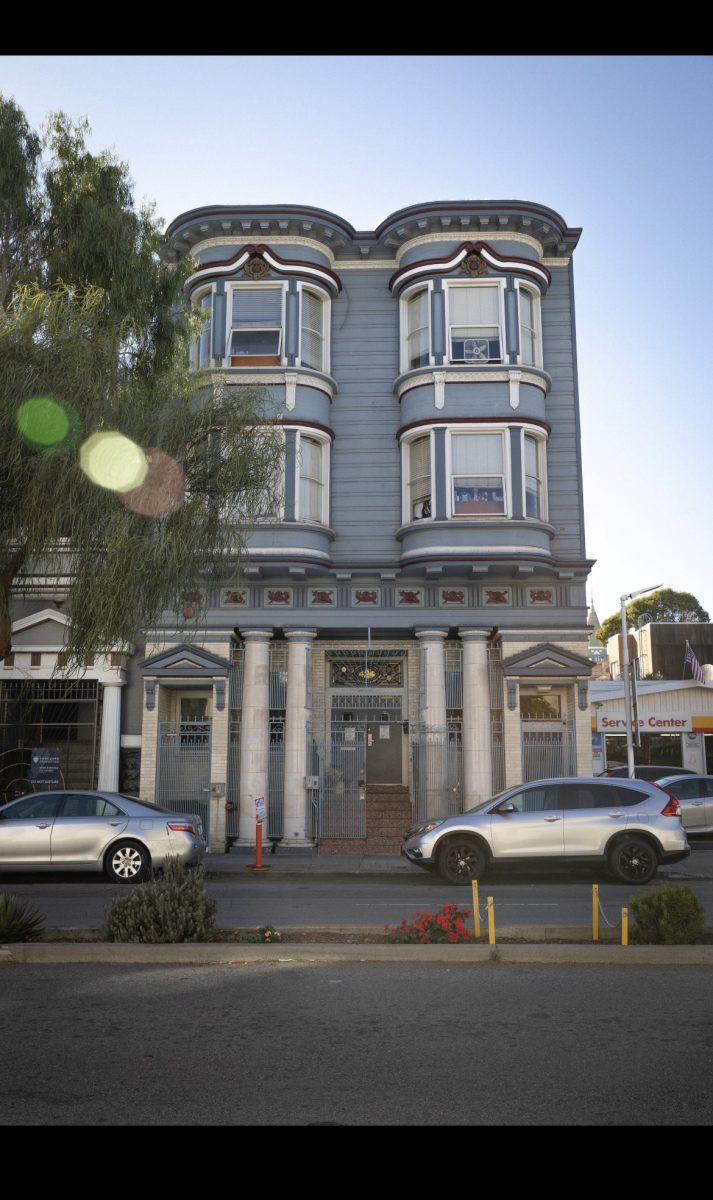Below you will find our March newsletter. In this issue: Report release: California Law Enforcement Agencies Are Spending More, But Solving Fewer Crimes, Cameo House program highlights, and All Youth Are Sacred LA Regional Convening.
California Law Enforcement Agencies Are Spending More, But Solving Fewer Crimes

We released our report on police clearance rates entitled California Law Enforcement Agencies Are Spending More But Solving Fewer Crimes at the state Capitol last month alongside community advocates and partners. Speakers included the report’s author CJCJ Senior Research Fellow, Mike Males, Ph.D, our Policy Analyst Grecia Reséndez, former law enforcement agents, as well as Prop 47 service providers and participants. Key findings and recommendations from the report were shared at the release. You can also stream the full press release on Instagram here.
Key report findings include:
- California police have record high budgets, $25 billion total in 2022.
- Since 1990, clearance rates have fallen by 41%, resulting in fewer than one in seven crimes solved.
- Clearance rates had been declining long before the start of California’s criminal justice reform era in 2011.
- Clearance rates vary by county, suggesting that local approaches may have a bigger impact than state law
- California is now more likely to imprison someone arrested. The rate of imprisonment per cleared (solved) offense rose by 207% since 1990.
We have been pleased to find that our partners and local media stations throughout California have used our report and tools to highlight local issues and to bring to light serious questions surrounding public safety spending.
Included on our website is a dashboard of interactive tools that can be used to view data by county or city, while also comparing it to the state average. We hope these tools and resources are an asset to you in examining spending in your city or county.
Additional resources:
As response began to grow to our report, we found some common myths that were being perpetuated. We developed a resource The Truth About Crime in California, which is also on our website. You can print this fact sheet on your own anytime to share.
If you have any questions or for media inquiries, please contact us at cjcjmedia@cjcj.org
Cameo House Program Highlights
Our alternative sentencing, residential program Cameo House program works to break the intergenerational cycle of incarceration by keeping families together and connecting them to resources and opportunities. We are proud to work with justice-involved women and their families who, as a population, have been historically underserved. Our program was designed by justice-involved women and is run by a diverse and committed staff.
A cameo starts as seemingly a plain stone that when carved becomes a priceless gem. This symbolizes the transformation we see with the women at Cameo House. This transformation is the result of a lot of work, care, and support both by the residents, our staff, and our community partners. Women can stay at Cameo House for 1 – 2 years to reach their goals, an average stay is 17 months. Below we are proud to lift up a few of their accomplishments and milestones.
This year we have already celebrated 3 of our participants graduating our program and moving into their own place with their children. Permanent housing is the ultimate goal for every woman and child that comes to our Cameo House program. In a city with approximately 3,000 counted unhoused women vying for just 99 shelter beds, we are constantly reminded of the need outweighing our city’s current ability to respond. This critical work also advances racial and gender equity while breaking generational cycles of incarceration. Congratulations to all of our graduates for their commitment and hard work. We are so proud of you for breaking cycles and changing your lives.
We love to support our residents in all of their endeavors. We are stronger and safer as a community when all voices and experiences are engaged and represented. Participants recently have also worked at their local polling stations and co-hosted community events for Black History Month. We see you Cameo House participants and program staff! Keep up the great work.
Cameo House staff dropping off their ballots on Super Tuesday to a polling station where Cameo House participant MW was volunteering.
Cameo House participant SB in collaboration with SF Sheriff’s Women’s Resource Center(WRC) hosting a Black History Celebration event.
Statewide Partnerships: All Youth Are Sacred LA Regional Convening

Los Angeles was the location of our SoCal regional All Youth Are Sacred: Community Safety Through Youth Power convening in March. This is a developing framework for youth justice work across the state for which CJCJ has been an anchor organization. Community organizers, young leaders, and invested service providers met at the Young Women’s Freedom Center in LA for a one-day event to discuss youth justice work in the Southern California area. We discussed the urgent situation in Los Angeles County as their two juvenile halls have been found unsuitable by the Board of State and Community Corrections. In the face of ongoing neglect, abuse, concerns, and deaths in the juvenile halls, youth justice advocates are fighting for the safety, care and futures of their young people. Work being done inside and outside of these facilities in Los Angeles took center stage during a panel featuring intergenerational experts. We will continue to monitor and support the efforts of community partners in LA as we await the future of their halls and the young people currently housed there.
For the second half of our day, we broke into regional groups to discuss existing campaigns and strategies to better support young people. Los Angeles County’s Youth Justice Reimagined plan was also lifted up as a template for community care and investment for our young people. Community stakeholders from Orange county, San Bernadino, Santa Barbara, Riverside, San Diego, Los Angeles county were present to engage in these critical discussions. Our collective knowledge and experiences have the answers to what type of investments and support our next generation needs to prosper. History has shown us repeatedly that punishment and incarceration do not rehabilitate, and that our young people cannot thrive behind bars. Plans like YJR are the types of visions for our shared future we should be working towards in the face of unsuitable, abusive facilities in LA. We thank all of our attendees for their participation and work on behalf of the most at-risk young people in the state.
Stay tuned for more information regarding this AYAS: Community Safety Through Youth Power work. From our regional convenings we will begin to build up youth leaders to advance shared efforts on behalf of ending youth incarceration in California. Thank you to our partner orgs, The California Alliance for Youth and Community Justice, Urban Peace Movement, and Young Women’s Freedom Center as we continue this important narrative and community empowering work, its an honor to build with you. Please reach out if you have any questions about this work, and check out our previous convenings via our newsletters. Want to see more photos of this event? Check out our Instagram post here.
If you have any questions or for media inquiries, please contact us at cjcjmedia@cjcj.org



